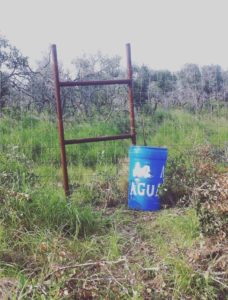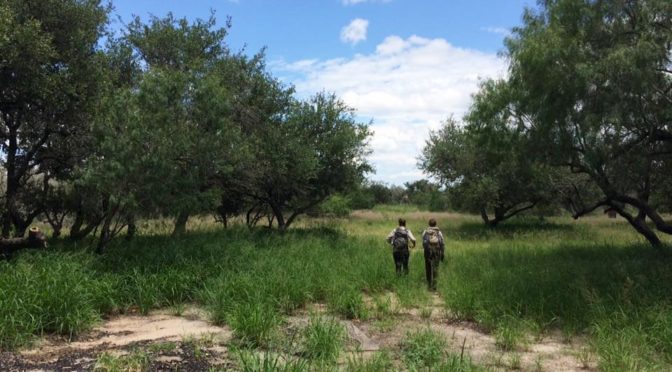In June, the two of us traveled to Brooks County, Texas as No More Deaths volunteers. We went to assist Eddie Canales and Ryan Stand of the South Texas Human Rights Center (STHRC) in their efforts to set up water stations in the region. South Texas has seen a huge increase in undocumented migration over the last five years.
In the South Texas backcountry, migrants face enormous heat and humidity with little access to resources or rescue, and may be scattered and injured by Border Patrol agents.
Brooks County made news in 2013 when the remains of more than two hundred unidentified migrants were exhumed from a mass grave in the local cemetery. The STHRC has since worked with forensic scientists, university students, and families to conduct DNA identification of the remains and, in some cases, return them to their loved ones. Each day, more people perish in the South Texas backcountry and the death rate has grown rapidly to now rival the Tucson Sector in southern Arizona.
As migration from Central America continues to skyrocket, more people are attempting to cross into the United States through the deadly backcountry that surrounds the Border Patrol checkpoint in Brooks County. They face enormous heat and humidity with little access to resources or rescue, and may be scattered and injured by Border Patrol agents. As a result, deaths continue to amass in the South Texas borderlands.
In addition to working with recovered remains, the STHRC has begun placing water stations to aid migrants in distress. Providing humanitarian aid in Brooks County comes with some unique challenges. Unlike the public lands of southern Arizona where No More Deaths works, the lands of South Texas are private. Many are oil and gas ranches, as large as 50 thousand acres, and armed with privately contracted security personnel. Without permission from ranchers, it is impossible to provide water, food, and medical aid in the most deadly stretches of the South Texas terrain.

During our visit, we worked with the STHRC to extend outreach to area ranchers and residents. One ranch manager we spoke with had personally found the remains of 44 migrants over the past decade. We saw how this level of human catastrophe, despite the large presence of Border Patrol in the area, has caused many in Brooks County to see the dire need for nongovernmental humanitarian assistance. We spoke with many locals who were inspired when they heard about our humanitarian-aid efforts in southern Arizona. Specifically, Brooks County residents were encouraged by the support that No More Deaths and People Helping People provide to border residents giving aid in Arivaca and Ajo.
After joint meetings with community members and groups, the STHRC was able to gain access to several area ranches. Since then, more than a dozen new water stations have gone up on private ranch lands. We hope that as access to ranches grows, so will the ability to respond to search-and-rescue calls for migrants in distress.
We also worked with the STHRC to use GPS to track trails in the terrain and to map their water stations based on the model we use at No More Deaths. With increased access to the land, the STHRC hopes to develop a better sense of how migrants are moving through the terrain and will be able to place their water stations accordingly. It is a special time for the growth of aid work in South Texas, especially for the collaboration among the many groups doing direct aid across the border zone.
Text: Sophie Smith and Hadley Pope. Featured photo: Sophie Smith.

